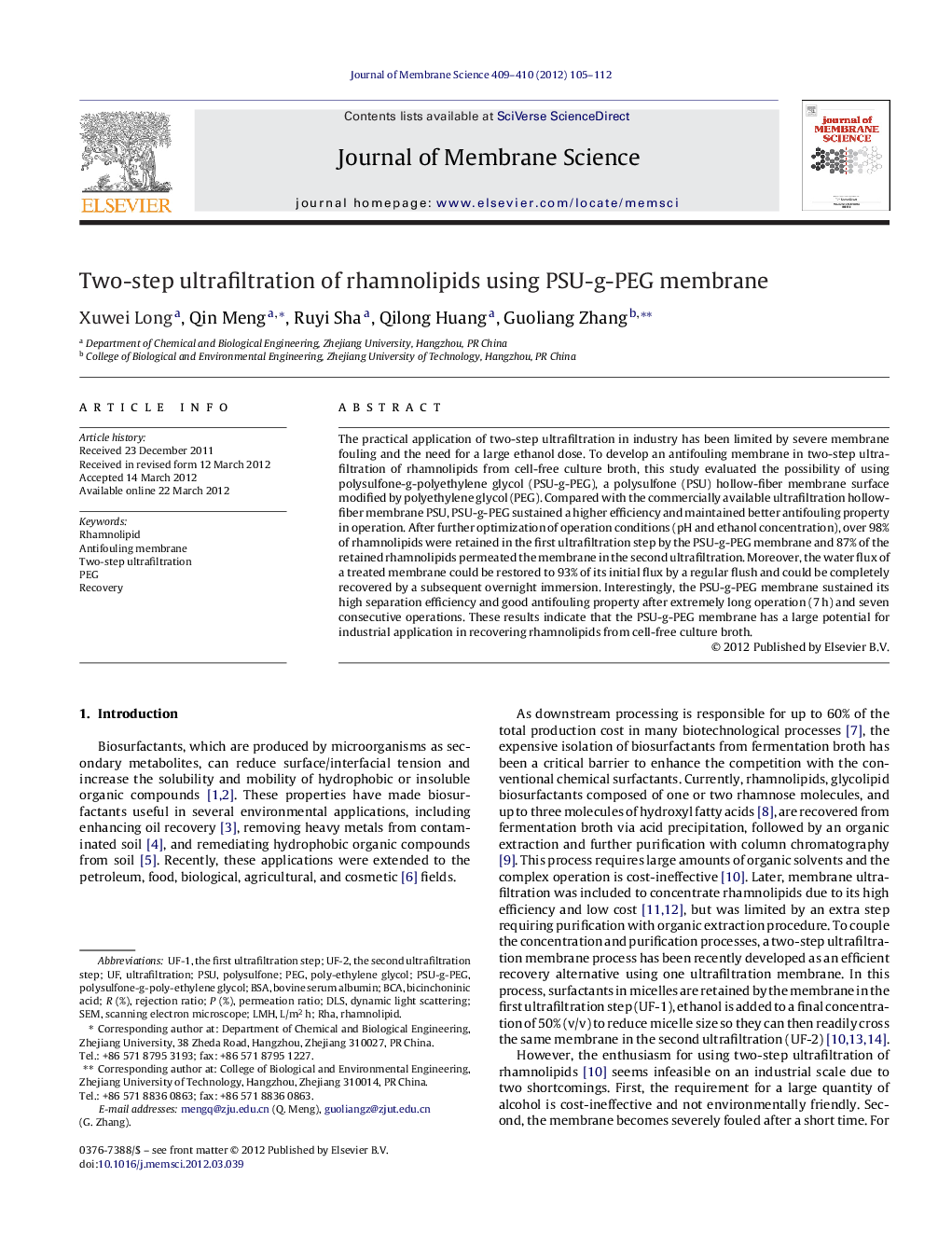| Article ID | Journal | Published Year | Pages | File Type |
|---|---|---|---|---|
| 634928 | Journal of Membrane Science | 2012 | 8 Pages |
The practical application of two-step ultrafiltration in industry has been limited by severe membrane fouling and the need for a large ethanol dose. To develop an antifouling membrane in two-step ultrafiltration of rhamnolipids from cell-free culture broth, this study evaluated the possibility of using polysulfone-g-polyethylene glycol (PSU-g-PEG), a polysulfone (PSU) hollow-fiber membrane surface modified by polyethylene glycol (PEG). Compared with the commercially available ultrafiltration hollow-fiber membrane PSU, PSU-g-PEG sustained a higher efficiency and maintained better antifouling property in operation. After further optimization of operation conditions (pH and ethanol concentration), over 98% of rhamnolipids were retained in the first ultrafiltration step by the PSU-g-PEG membrane and 87% of the retained rhamnolipids permeated the membrane in the second ultrafiltration. Moreover, the water flux of a treated membrane could be restored to 93% of its initial flux by a regular flush and could be completely recovered by a subsequent overnight immersion. Interestingly, the PSU-g-PEG membrane sustained its high separation efficiency and good antifouling property after extremely long operation (7 h) and seven consecutive operations. These results indicate that the PSU-g-PEG membrane has a large potential for industrial application in recovering rhamnolipids from cell-free culture broth.
► PSU-g-PEG membrane sustained a much better antifouling property than PSU membrane. ► The pH regulation in two-step UF significantly increased the recovery efficiency. ► The two-step UF with PSU-g-PEG membrane showed prospects in industry.
